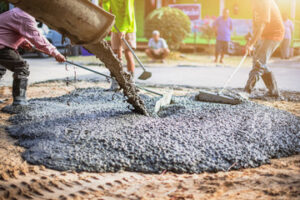Service dogs can help regain independence, offer emotional support and provide lifelong companionship. They may assist with mobility tasks, alert to an oncoming seizure, or reassure a child during anxiety episodes.

California Service Dog Training requires an unwavering daily commitment of 30-60 minutes. This time must be taken regardless of other obligations and is non-negotiable.
Service dogs perform many different trained behaviors to mitigate their handler’s disabilities. These behaviors are often divided into work and tasks but it is important to remember that not all behavior falls neatly into one category.
The most common task is the retrieve. It is an essential skill that can be used to help people with a variety of disabilities. This on-demand course covers training the basic components of this critical service dog task as well as more advanced behaviors like retrieving items off counters, from under furniture and more. It also provides guidance on when to train a specific service dog behavior and how to properly cue it.
Another important service dog task is the alert. This can be used to alert a person with a medical condition about changes in their body or environment. Examples include a diabetic alert, an allergy or asthma alert, or even a seizure alert. These alerts empower people with disabilities to conserve their energy, prevent injury or death and minimize dependency on family members or emergency services.
Finally, psychiatric service dogs can be trained to alert their handler to changes in their mental state. This can be as simple as the dog recognizing their handler’s racing heartbeat to a full-blown panic attack. It may be as complex as a psychiatric service dog interrupting their handler’s self-harm or pulling them away from their trigger. This type of service dog can be trained to use a variety of handler-based cues like deep pressure therapy, grounding, blocking (standing in front or behind their handler to give them slightly more physical room) and reality-testing (“watch my back”) to reassure their handler or distract them from a frightening hallucination.
Some people are incorrectly under the impression that only those with severe disabilities can benefit from a service dog. In fact, a highly-trained service dog can significantly improve the quality of life for people with a range of disabling conditions. If an individual is able to work, play with their children or friends, maintain a home and care for themselves, service dog training can be an invaluable tool in helping them do so.
Socialization
While in training, service dogs spend the majority of their time not actively working. They are simply awaiting commands from their handlers. But to be prepared to work when called upon, these animals need to know how to ignore distractions. Trainers use a variety of methods to help the dogs maintain a sharp focus, including putting them in environments like crowded malls or airports where they may encounter many people. They may also toss toys or other distracting items to the dog and allow them to run off in search of the object. This is especially important for breeds that are prey driven, such as German Shepherds or Belgian Malinois.
After completing basic obedience training and socialization, service dog trainees are ready to take their new skills into the real world. As such, it is critical for businesses to be aware of a few key considerations when welcoming a service dog into their establishment.
The first consideration is to ensure that the dog is properly identified as a service animal by the handler. This means a service dog should be wearing an official vest with patches that clearly state “Service Dog,” and the handler should be able to provide proper documentation (like a DSAR card) or credentials to prove that they are indeed the dog’s handler.
Another key consideration is to be clear about the dog’s job when interacting with customers. Some business owners are finding that their customers are bringing in pets that they falsely claim to be service dogs. This can cause serious safety issues for customers and staff, as well as create a negative image of the business and its owners.
It is also important to be clear about what the dog is not allowed to do, and to make sure that any family members and friends are on board with these guidelines. If a family member or friend wants to pet the dog while it is in uniform, they should ask the handler for permission. If they are not comfortable with the request, they should let the dog out of its vest and wait until the handler is free to interact with them.
Basic Obedience
All service dogs must master basic obedience commands such as sit, stay, and come. Trainers use positive reinforcement and consistency with these commands, and work to ensure that the dog will respond no matter what the distraction. This is more difficult than teaching a pet dog basic obedience, but it’s an important part of the process and something that should never be overlooked.
Depending on what the service dog will specialize in, they may undergo various types of task training. For example, a service dog that will assist with balance issues may be trained to help the handler stand back up by positioning themselves under them like a pillow, or to pick things up off of the ground for them. Other tasks might include alerting to medical emergencies (like changes in blood sugar), or seizure detection.
Once a service dog has been successfully trained to perform their tasks, they will begin public access training. This is a critical step in making sure the dog will behave appropriately and respectfully in public, ignoring any distractions or other people. This is also where the dog learns not to greet other dogs, ignore coos of “cute puppy” and people trying to pet them, and to remain calm when approached by strangers.
Having the right temperament and energy for this type of training is essential. It’s a huge commitment to raise a service dog and it is not recommended for anyone who is not able to make this kind of time or financial investment. It is also not a good idea to train your own dog to be a service dog, particularly while in high school or college. These aren’t stable times in a person’s life to try and train and raise a service dog, and it can lead to frustration for both the owner and the dog.
If you have questions about service dog training or would like to learn more about it, contact Paws With A Cause. They are a great resource and offer classes that will prepare your dog for service training. They are a non-profit organization that provides dogs to people who need them. They do not discriminate based on race, religion, gender, sexual orientation, sex (including pregnancy), disability, national origin, age, genetic condition or marital status.
Behavior Training
During this stage, trainers teach service dogs how to respond to their handler’s signals. They train them to ignore other people and animals, stay calm in public places, and perform complex behavior chains on command.
The trainers also teach their clients how to work with their service dog to ensure smooth communication and teamwork in a variety of environments and situations. They learn how to identify and address any potential behavioral problems in their students, such as aggression towards humans or other dogs, fear, and anxiety.
Trainers help their clients select the right puppy or dog for their needs. This is an important part of the process as well as ensuring the student is able to meet the demands of the training program. This involves a thorough behavioral evaluation and temperament screening, which includes testing the dog’s response to noises such as thunder. This is because the dog will often need to assist its owner during thunderstorms, and the dog must not cower in fear. The trainers will also test the dog’s reaction to pain, as many service dogs need to yelp on command to alert their owners when they are injured.
This phase of training is often the most challenging for first-time service dog owners. They must train the dog to perform its required tasks in public without distractions, and they must be able to teach their pet how to behave when not on duty. This can include teaching them not to greet other dogs, ignoring coos of “cute puppy” and petting from strangers, and remaining calm in the presence of large crowds or loud noises.
The training costs for a service dog can be high, but the independence and companionship they provide their clients is invaluable. The cost of training may deter some people from pursuing this type of training, but it is important to weigh all options when deciding whether a service dog is an appropriate choice for your situation. There are also a number of organizations that provide free service dog training to qualified individuals, and this is an excellent resource to consider.



